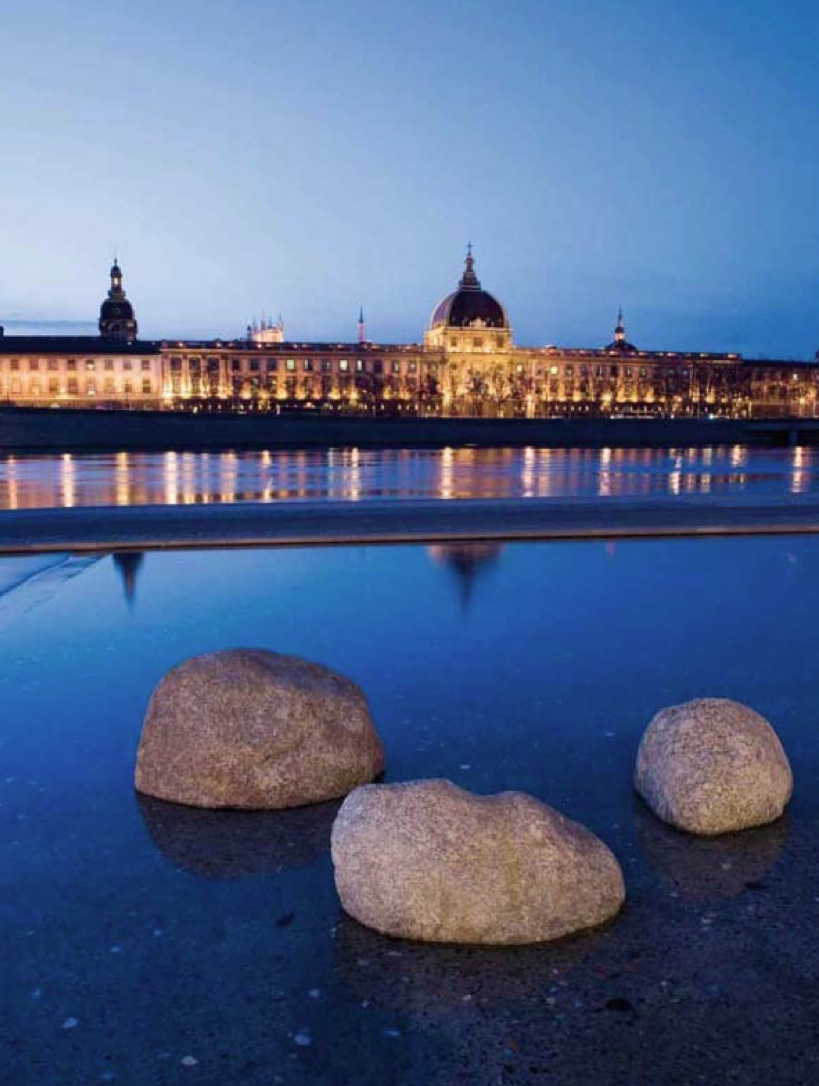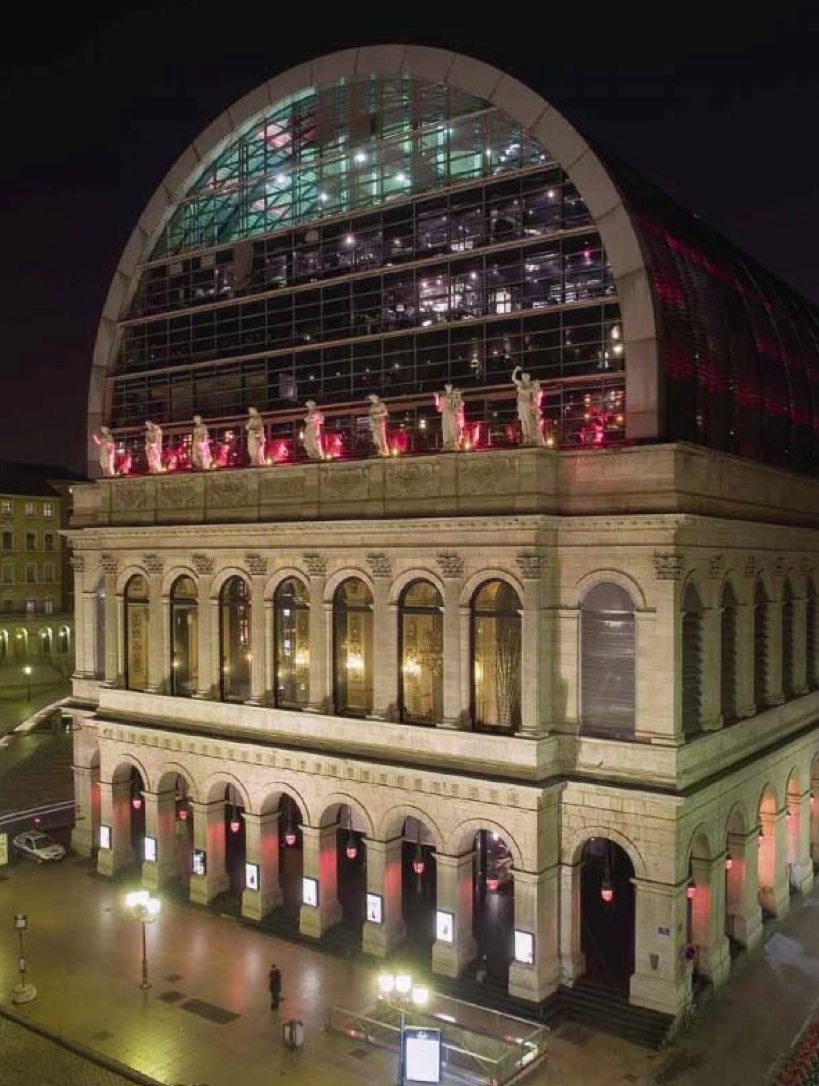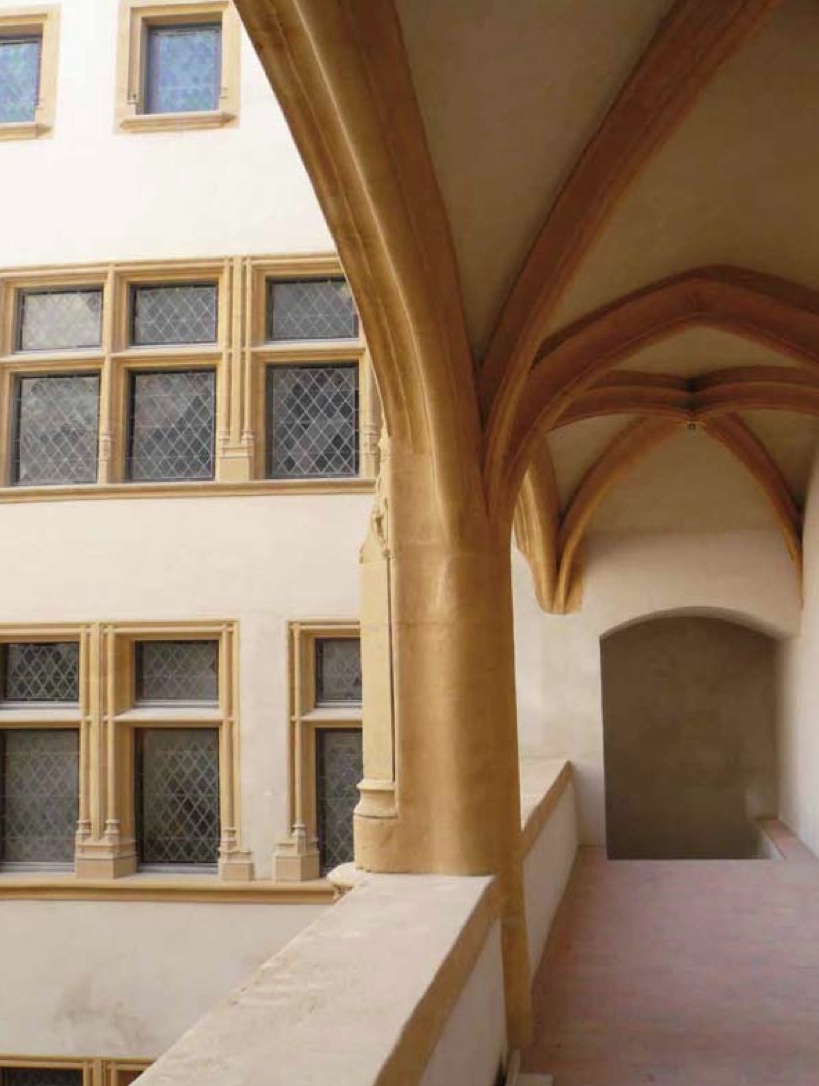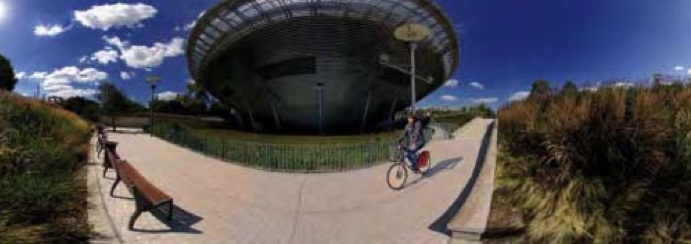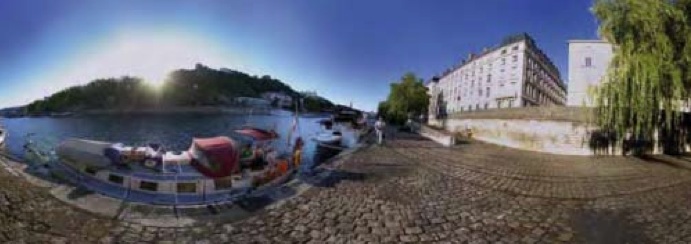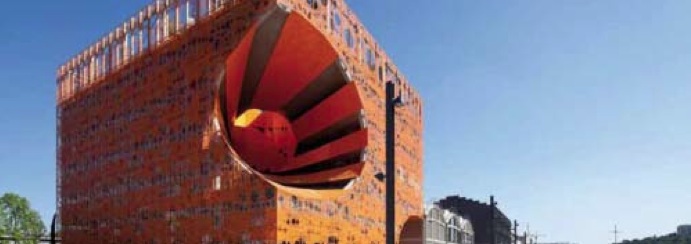Conference venue > About Lyon
Historic Lyon- Lyon: a World Heritage Site.
1,200 acres, acknowledged by UNESCO, are spread over 3 districts: Vieux Lyon, the City Centre (the Peninsula) and Croix Rousse. - Vieux Lyon a preserved sector,
is one of the largest Renaissance quarters in Europe, together with Venice. In particular, the successful 15th and 16th century fairs attracted numerous Italian bankers who made Vieux Lyon the colourful Renaissance district we know today. The pedestrian area, enlivened by café and restaurant terraces, with bustling nightlife, offers a warm, lively ambiance. The famous traboules (from the Latin transambulare) are passageways that allow people to cross directly from one street to another through inner courtyards. They were created to facilitate pedestrian traffic. As they move through these traboules, visitors discover a unique and unexpected architectural heritage of galleries and spiral staircases.
between the Saône and Rhône rivers, called the Presqu’île (Peninsula), has always been the heart of busy activity around the neighbourhood’s businesses, shops, bookstores and theatres. Charming squares and prestigious buildings are present all around this district, which is ideal for shop- ping or just wandering around. the Silk district, is also part of the classified site. Silk workers, known as canuts, used to occupy buildings that were designed to house imposing handlooms and the new machines invented by Jacquard. A lively, atypical district that has carried on the silk- working tradition in a few weaving workshops and has opened itself up to design and new trends. Urban Lyon
Tony Garnier made his mark on the city with, among other things, the Halle Tony Garnier, a former slaughterhouse with a metal structure that has become a venue for concerts and exhibitions, the Gerland Stadium and the Edouard Herriot Hospital at Grange Blanche (Lyon 3rd district). The Tony Garnier Urban Museum offers 28 painted walls (or frescoes), as a tribute to Tony Garnier and to ideal cities. Created from the 1970s, it is France’s second largest business district after La Défense. The Part-Dieu Tower and its 42 floors, a central attraction in this district, is now accompanied by the Oxygène Tower. This tower is 115 m high and has 28 floors. It houses offices and shops and adjoins the Part Dieu shopping centre. They will be joined by a 3rd tower, the Incity Tower, in 2014.
Built by Italian architect Renzo Piano, from 1992 to 2006, the Cité Internationale stretches over 74 acres on the banks of the Rhône, along Parc de la Tête d’Or. This district occupies the site of the former Lyon fair. Every year, the Conference Centre, Amphitheatre (3,000 seats) and hotel complex welcome numerous international events. This district also has many shops and offices, a casino (Le Pharaon, Groupe Partouche), a cinema complex and the Museum of Contemporary Art. This architectural complex is a strong symbol at the Northern entrance to Lyon. - The Lyon-Saint Exupéry HST rail station.
Built by Spanish architect Santiago Calatrava, the train station resembles a gigantic steel and glass bird that is about to take flight, and stands as a striking emblem of the airport.
Lyon the birthplace of cinema no less!
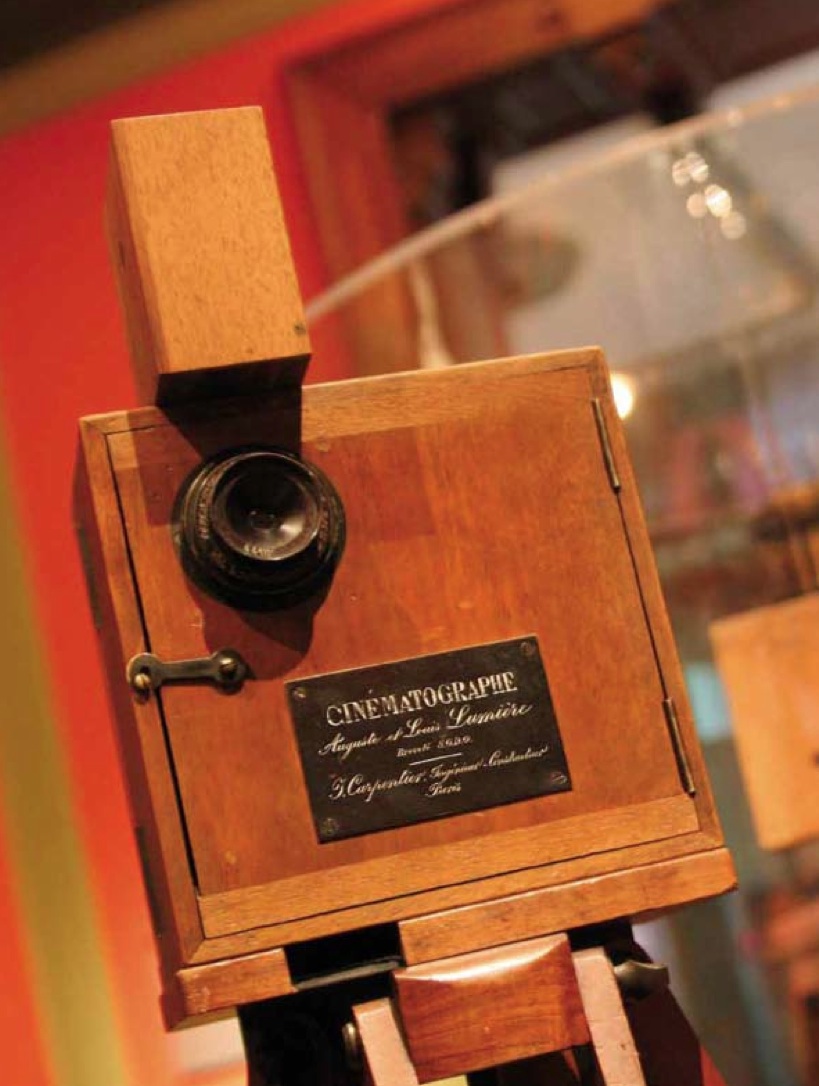
It was in Lyon in the 19th century that the Lumière brothers invented new photographic processes and patented the “cinématographe”. Cinema was born! The family home which is now the Lumière Museum traces the history of the Cinématographe invention in 1895.
- The greater Lyon cinema festival.
This festival is dedicated to the 7th art and the general public, in the city where the Cinématographe was born, to bring fresh perspective to films that tell the story of our world. The films are shown in fully upgraded technical conditions with new, restored and digital copies. The festival films, which include tributes and retrospectives, can be viewed in all the Greater Lyon cinemas. Each film and each showing are presented by a personality: directors, actors, screenplay authors, technicians and producers. The most famous films in the history of cinema are hosted by today’s biggest names in cinema. For the 1st edition in 2009, actor-director Clint Eastwood was the guest of honour. - Outdoor cinema: a real tradition.
From June to September, outdoor cinemas invade the city, its Gallo-Roman theatre and its parks. In particular, the Lumière Museum organises showings on Place Ambroise Courtois (Lyon 8th district).
Gourmet Lyon
Let yourself be charmed by the atmosphere of this city which is filled with delights for the eyes and the taste buds. Because the art of good-living has made Lyon’s reputation the world over. 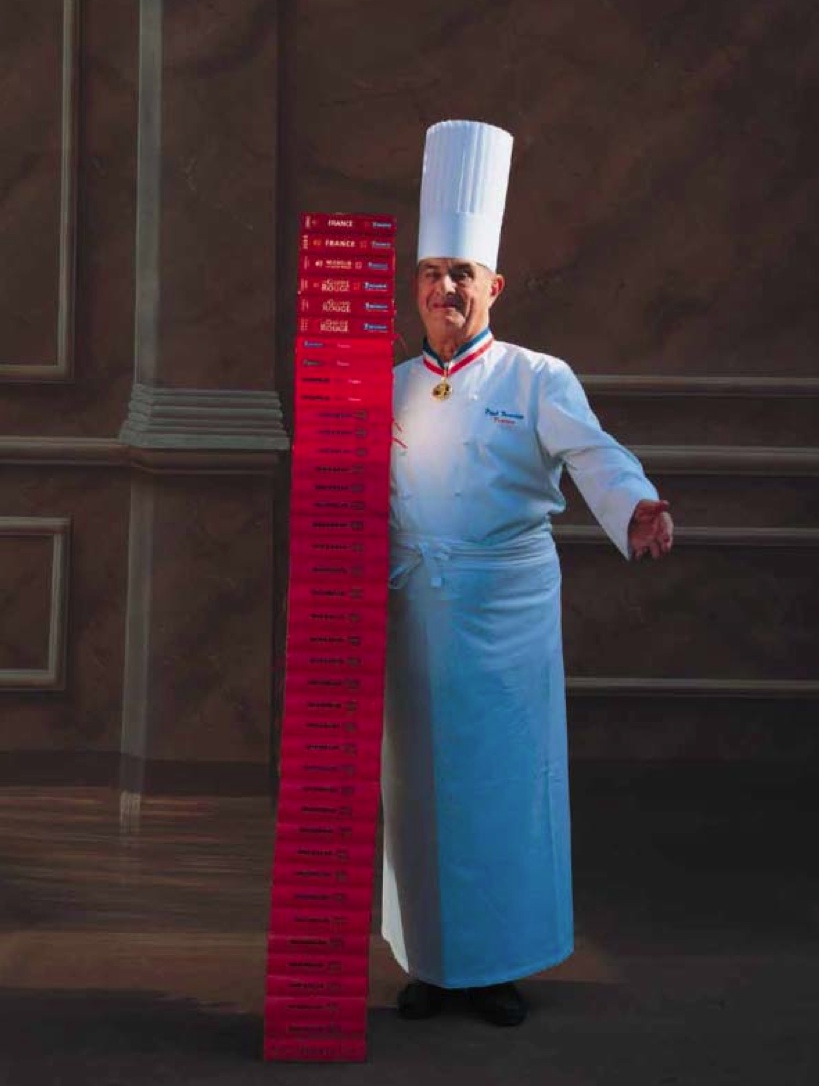
With a whole host of award-winning restaurants, famous chefs, brasseries with hundred-year-old backdrops and counter cafés, whatever you want, you’ll find it. Around each table, Lyon has countless ways, ranging from traditional to inventive, of showcasing the treasures of its local country fare. You will find a real symphony of flavours and colours as you stroll through outdoor markets with their sweet, southern aromas, or through Halles de Lyon Paul Bocuse, a permanent covered market where the great chefs do their shopping. There are nearly 2 000 restaurants in Lyon, several of which have earned stars in the Michelin Guide. The most typical of course, are the traditional bouchons, which only exist in Lyon! - Tradition and innovation.
The word bouchon dates back to the era when inns that served wine outside meal times were recognised by a sheaf of straw that they hung on their signs. This sign was associated with the normal stopping points for mail and stagecoaches in front of the inns. Thus, while their horses were being wiped down, coachmen were invited to have a drink. But in Lyon, tradition also means creativity. The city has had its own culinary revolution with the opening of new themed restaurants, invented by chefs with a certain pioneering approach.
Lyon, a river city
Lyon is at the confluence of 2 rivers, the Rhône and the Saône, and has more than 28 bridges! During the day and at night, the rivers bring a special, gentle atmosphere to the Lyon riverbanks.
And of course, there are miles and miles of riverbanks!
The banks of the Rhône, which connect the Parc de la Tête d’Or to the Parc de Gerland, have been developed into a 5 km “green lane”. Along the river, there are play areas, a botanical trail, a safe cycling lane, roller skates, promenades and wooden piers, with terraces and riverboat restaurants. They offer a real, efficient alternative to motorised transport, for a more pleasant and more human city.
The aim of this ambitious project is to reclaim almost 50 km of river banks (25 km on each bank) allowing for the creation of a continuous trail, interspersed with a number of specially created works of art. This trail provides a great opportunity to discover the outstanding architectural and natural heritage to be found along the water’s edge between La Confluence and Neuville-sur-Saône, the flora and fauna which are now finally getting the attention they deserve. It will also be available for sports and leisure activities in conjunction with the nearby areas.
Boats are an alternative way for visitors to explore the city, either along the Saône, to L’île Barbe, or along the Rhône, passing by the confluence, so they can discover this new district from another angle. Lyon is also the starting point for several-day river cruises to Avignon. Boats can also be used to transfer people between various sites in the city that have piers: conference centre, peninsula, etc...
Futuristic Lyon
Greater Lyon has been committed to upgrading urban quality for several years. It thus started the millennium with a number of consistent, major projects, to strengthen economic and new development activities, enhance new technology sectors and ensure smooth travel into and out of the city. This development goes with a drive to achieve a balance, to maintain a good quality of life in the city, particularly through green spaces and cultural and leisure sites.
- The new confluence district (2009-2015),
Europe’s largest urban centre renovation project An ambitious programme has been launched that combines an offer of housing areas, offices and widely varying activities, together with large and convivial public areas: the creation of a tram system, the opening of a shopping and leisure centre with the creation of a 150-room Novotel hotel, the creation of a nautical centre with a river mooring, and the cultural and leisure renovation of the Port Rambaud buildings, opening the way to the Musée des Confluences, and a science and societies museum. All the housing and office programmes around the nautical centre are HQE (High Quality Environmental standard) compliant.
The Incity Tower will be completed in 2014 in the Part- Dieu district, close to the famous “Halles de Lyon Paul Bocuse”. The tower, with its long slim proportions, will be taller than Tour Part-Dieu and Tour Oxygène, and will be the new reference point on the Lyon skyline: with 143 m for living accommodation, 154 m for technical facilities and 170 m for the pinnacle, Incity will culminate in a mast 200 m above ground level.
INCITY is also a socially and environmentally responsible tower, aimed at sustainability and long-term economic performance (objectives: HQE approach/ Certivéa THPE label / A very low-energy and CO2 responsible tower).
|

